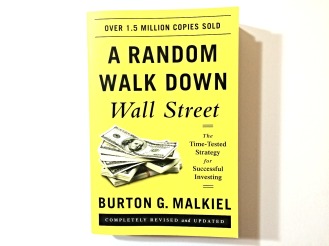Suppose you are new to investing, and would like to participate in the market but don’t have the time or knowledge to research individual stocks (or you’re just lazy), what should you do? Let’s explore a few options from the book: A Random Walk Down Wall Street by Burton G. Malkiel. For this article, let’s focus on two things, the importance of low fees and the asset allocation for the folks in their 20s according to Burton G. Malkiel.
HIGH FEES? WE DON’T NEED NO STINKIN’ HIGH FEES.
Now before you purchase that mutual fund your bank advisor is trying shove down your throat, consider looking at the different expense fees. Recently, many funds have come under criticism for their high fees and poor performance (compared to the benchmark), and rightfully so. Be aware of the MER, TER, front and back loads on these funds. A MER (Management Expense Ratio); is whats going to cost you for them to manage your money per year. A simple example is the following:
You find a nice mutual fund you’d like to invest in, and decide to place your hard earned $10,000 into that fund with an MER of 2.5% (this is high, and quite common). Essentially, you’ll lose $250 just to management expense fees. Now let’s assume the benchmark is the market, and it’s returning about 7%. Simply put it, you better hope your fund returns at least 9.5% just to get even with the market. Note that many funds, after fees don’t consistently outperform the market.
Now I know what you’re thinking, what’s 2.5% to you? Don’t think 2.5% is a lot?
Consider the following:
Let’s say you choose a fund that performs just as well as the market but has an MER of 2.5%. You invest $10,000 for 20 years.
Market performance: $10,000 at 7% compounded for 20 years: $38,697.
Fund performance: $10,000 at 4.5% (7-2.5) compounded for 20 years: $16,386.
You’ve indirectly lost $22,311, or about 136% to that “tiny” 2.5% fee. The longer the time, the more you lose indirectly to fees. High fees are crippling, and most people (especially starters) don’t notice them, so be careful.
“It is not necessary to do extraordinary things to get extraordinary results… By periodically investing in an index fund, the know-nothing investor can actually outperform most investment professionals.”
– Warren Buffett
For beginners, Burton G. Malkiel recommends diversifying to decrease risk by purchasing different Indexes or ETFS: Stocks, Bonds and REITs and by weighing them differently during the stages of your life. For starters in their early 20s, diversify, seek a no-load, low expense, broad-based index funds, and it’s advisable to make these purchases in a Tax-Free Savings Account (TFSA).

Because you’ve got much time in your 20s before retirement, Malkiel recommends consistent contributions (to a no-load fund) and that the majority of your holdings:
–(70%) be of stocks. He recommends to put one half in U.S. small cap growth stocks (no-load, low expense Index and ETFs) and the other half in international stocks, including emerging markets.
-Cash (5%) should be in money-market fund or short term bond funds.
-Real estate (10%) should consist of high quality REIT portfolio.
-The remaining bonds (15%) should contain: no-load, high grade corporate bond fund, foreign bonds, some Treasury inflation protection securities or dividend growth stocks.
Some Equity Index Funds and ETFs tickers from A Random Walk Down Wall Street:
FSTMX, SWRXX, VFIAX, VOO, VTI, IWB, TWOK, VEMAX, VTIAX.
Now as you enter your 30s, 40s and so on, the mix of stocks, bonds, real estate (REITs) and cash will change. For instance, according to Malkiel, in your 30s, your Stocks-Cash-Bonds-Real Estate allocation would be: 65%-5%-20%-10%, respectively. You would slowly move to “safer” investments as you age.
If you’re relatively new to stocks, don’t expect quick gigantic returns, especially not from Malkiel’s recommendation. This type of diversified allocation has the goal to decrease risk through exposure of broad indexes. Long term index and ETFs are made to pay off in the long term. Briefly, for starters: the takeaway would be to look out for high fees and contribute to index and ETF funds according to your age. Always do your own research.
All in all, you can find the full asset allocation by age from: A Random Walk Down Wall Street. It was an amazing book, written like no other and it sheds new light to numerous important topics such as the efficient market hypothesis (EMH), behavioural finance, random walk theory, diversification and much more. I will have a review on this book soon. Meanwhile, you can find the book here.Of course all this, JMO (just my opinion).
In investing money, the amount of interest you want should depend on whether you want to eat well or sleep well.
-J. Kenfield Morley
Disclosure: I have no positions in any of the recommended ETFs or Indexes at the date of this article. I wrote this article myself and it expresses my own opinions, I am not a financial advisor. I do not get any compensation from this, other than from Amazon Affiliate links and advertisements. On the date that this article was posted, I have no affiliation with any of the ETFs or Indexes.
